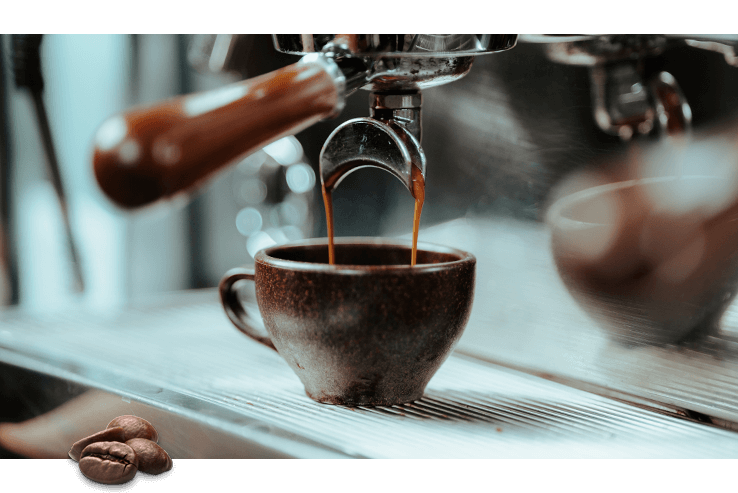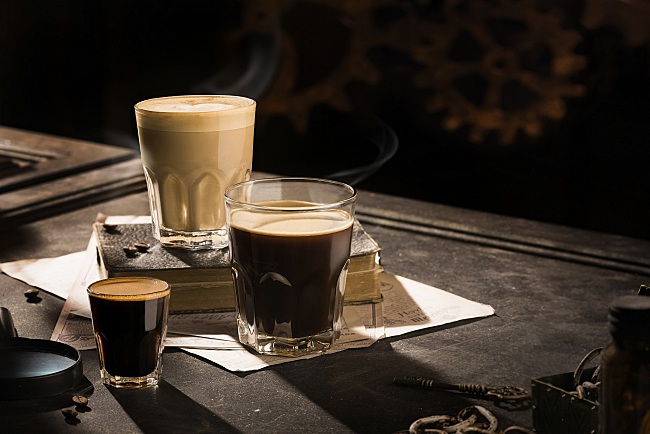Exploring the Rich Tastes of Coffee Beans: a Deep Study Espresso and Blended Coffee Beans
When you explore the abundant flavors of coffee beans, you uncover an intricate world where each variety brings its very own character to your mug. As you navigate through the art of coffee and the imagination behind blended coffees, you'll start to appreciate the nuances that make each sip distinct.
The Beginnings of Coffee Beans: Checking Out Terroir and Flavor Profiles
When you take a sip of coffee, you're not simply delighting in a beverage; you're experiencing an abundant tapestry of flavors shaped by the beans' beginnings. Each region produces special flavor accounts influenced by environment, soil, and elevation. Beans from Ethiopia usually rupture with intense, fruity notes, while those from Colombia have a tendency to offer a balanced, nutty sweet taste.
As you check out different origins, you'll see exactly how terroir-- the ecological elements influencing a crop-- plays a crucial duty - Single Origin Espresso. The exact same coffee selection can taste considerably different relying on where it's grown
When you think about these aspects, you start to appreciate the complexity behind your cup. Each sip narrates of the land and the farmers that supported the beans. So, next time you indulge, assume about the journey your coffee took before it reached your hands, and relish those intricate flavors that show its beginning.
Understanding Espresso: The Art and Science Behind the Brew
When you think of coffee, it's not almost the solid taste; it's likewise regarding the techniques that bring it to life. Comprehending exactly how different preparation methods impact preference can change your brewing experience. Let's explore the intricacies of espresso prep work and discover the special flavor profiles that make each mug unique.
Espresso Preparation Techniques
Coffee preparation is both an art and a science, incorporating specific methods with a deep understanding of coffee. To start, you'll wish to pick top notch, newly roasted beans and grind them carefully for suitable extraction (Single Origin Espresso). The work dimension is important; too crude, and your espresso will certainly be weak, as well fine, and it'll be bitter
The result needs to be a rich, creamy coffee with an attractive layer of crema on top. With technique, you'll grasp these methods.
Flavor Profiles Clarified
The globe of coffee uses a rich tapestry of taste profiles that can elevate your coffee experience. When you take that first sip, you'll notice a balance of acidity, sweet taste, and anger. Each espresso bean carries special notes, from flower and fruity to nutty and chocolaty. Light roasts frequently display bright acidity and dynamic tastes, while dark roasts existing much deeper, bolder tones.
A well-crafted mix may balance the bright notes of an Ethiopian bean with the rich, chocolatey touches of a Brazilian bean. Welcome the trip of finding espresso's diverse tastes, and you'll change your coffee ritual right into an amazing journey.
Handling Techniques: Exactly How They Influence Flavor and Fragrance
While it could seem that the origin of coffee beans is one of the most substantial aspect in identifying their flavor and aroma, the handling techniques used post-harvest play an equally important role. You'll locate that these techniques can substantially modify the final preference profile of your cup.
For example, the washed process eliminates the fruit from the beans before fermentation, commonly causing a cleaner, brighter taste. At the same time, the natural process leaves the fruit intact throughout drying, leading to a sweeter, fruitier account.
Other techniques, like honey processing, strike an equilibrium, allowing some fruit mucilage to stay, providing an one-of-a-kind complexity.
Each handling technique engages with the beans' fundamental features, improving or silencing particular flavors and aromas. When you drink that coffee or blended coffee, keep in mind that the trip from cherry to cup is influenced not just by beginning yet also by exactly how those beans were refined.
Toasting Techniques: Unlocking the Complete Possible of Coffee Beans
Roasting techniques are vital for disclosing the complete potential of coffee beans, as they transform raw, eco-friendly beans right into the fragrant, savory coffee you enjoy. The option of toasting technique-- light, tool, or dark-- significantly influences flavor accounts. Light roasts protect the click here to read beans' all-natural level of acidity and fruity notes, while tool roasts equilibrium sweet taste and splendor. Dark roasts, on the various other hand, stress bold, smoky flavors.
A slower roast at lower temperatures permits for complicated tastes to establish, while a quicker roast can heighten bitterness. By understanding these strategies, you'll expose a globe of taste, elevating your coffee experience to brand-new heights.
The Magic of Blended Coffee: Creating One-of-a-kind Flavor Experiences
Creating an unique taste experience with blended coffee can change your morning routine into an exploration of preference. By combining various beans from different areas, you can disclose a harmony of flavors that boost your cup to brand-new heights. Each mix offers a distinctive profile, stabilizing acidity, body, and sweet taste to develop something really unique.
When you choose a mix, you're not just choosing a coffee; you're selecting a trip across varied landscapes and cultures. Try out different combinations permits you to discover your individual faves, whether you delight in fruity notes or abundant, chocolatey touches.

Sampling Notes: Recognizing the Nuances in Your Mug
As you drink your coffee, you could discover a range of tastes dancing on your taste, each revealing the ins and outs of the beans. You might taste the intense acidity reminiscent of citrus or the deep, rich notes comparable to dark delicious chocolate. The sweetness could evoke honey or caramel, stabilizing the total account wonderfully.
Take note of the body of the coffee-- does it really feel light and ventilated, or is it complete and creamy? The finish, too, uses ideas; a sticking around aftertaste may hint at nuttiness or floral undertones.

Do not neglect to check out the special attributes of different origins, as each region presents distinctive tastes - Single Origin Espresso. Ethiopian coffees frequently present fruity notes, while Colombian beans could display a much more rounded sweet taste. By acknowledging these nuances, you'll deepen your admiration for each and every cup, elevating your coffee experience to new elevations

Developing Techniques: Taking Full Advantage Of Flavor Removal for every single Bean
When you check out the different brewing approaches, you'll find that each technique can substantially influence the flavor profile of your coffee. From French press to pour-over, each approach essences various substances, enhancing or silencing particular notes. Utilizing a French press allows oils to continue to be in the brew, developing a richer taste, while pour-over stresses clarity and illumination.
Temperature and grind dimension also play crucial roles. A coarser work works best for check this chilly mixtures, while a fine work is perfect for coffee. Trying out water temperature level-- between 195 ° F and 205 ° F-- can expose surprise flavors, also.
Don't ignore steeping time; a fast removal can result in sour notes, while over-extraction might yield resentment. By readjusting these variables, you can take full advantage of taste extraction and really boost your coffee experience. Enjoy the journey of finding what approach finest fits your taste!
Frequently Asked Inquiries
What Is the Ideal Water Temperature for Developing Coffee?
The ideal water temperature for developing coffee's in between 195 ° F and 205 ° F. If you use water that's too warm, you'll over-extract tastes; also cold, and you won't draw out sufficient. Aim for that sweet area for the very best brew!
Exactly How Does Work Dimension Affect Coffee Flavor?
Work dimension considerably impacts coffee taste. Finer grinds essence extra oils and flavors, causing a bolder preference, while coarser grinds yield a lighter taste. Readjusting grind dimension assists you attain your preferred coffee account.
Exist Health Perks Associated With Drinking Coffee?

What Is the Difference Between Arabica and Robusta Beans?
Arabica beans are smoother and sweeter, often including fruity tastes, while robusta beans are more powerful with a bitter taste and higher caffeine web content. You'll see these distinctions in scent and brewing experience.
How Can I Shop Coffee Beans for Quality?
To keep coffee beans for freshness, maintain them in an impermeable container, far from light, warmth, and wetness. If you just grind what you need right before brewing., you'll keep their flavor longer.
Discovering the Rich Tastes of Coffee Beans: a Deep Dive Into Coffee and Blended Coffee Beans.
When you explore the abundant flavors of coffee beans, you uncover an intricate globe where each variety brings its very own character to your mug.When you take a sip of coffee, you're not simply delighting in a beverage; you're experiencing an abundant tapestry of flavors formed by the beans' origins.Roasting techniques are essential for revealing the complete capacity of coffee beans, as they change raw, eco-friendly beans into the fragrant, flavorful coffee you appreciate.As you drink your coffee, you might see a spectrum of tastes dancing on your taste buds, each revealing the ins and outs of the beans.